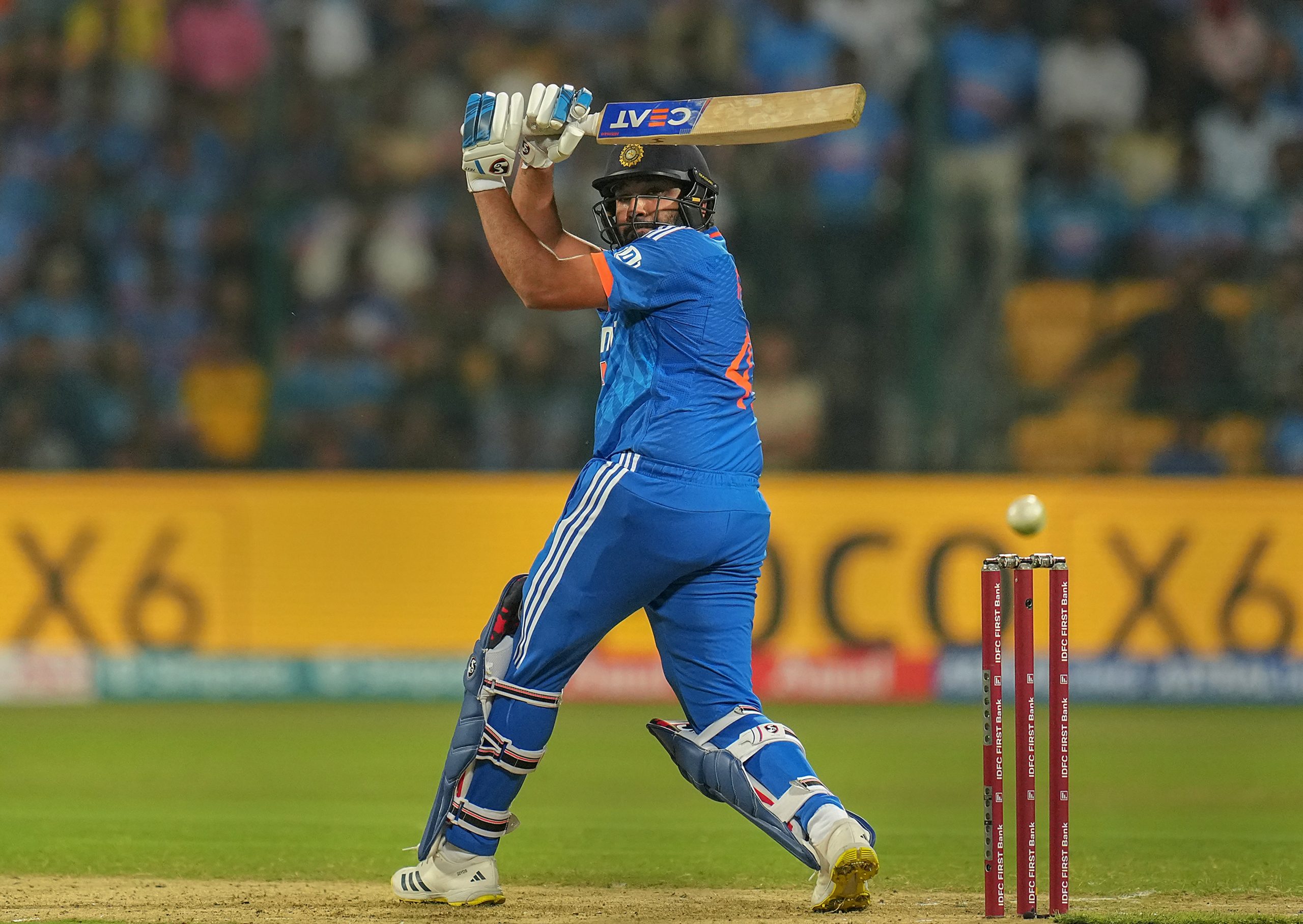Even if Rohit Sharma’s record-breaking fifth T20I hundred against Afghanistan wasn’t enough to make headlines, two Super Overs to conclude a thriller in Bengaluru, including questions around how Rohit batted thrice in the game (one during India inning and twice during two Super Overs) did the job. Here, we will look into what the rule book says, understanding what happened on the field during the longest-recorded T20I game ever.
Thank you for reading this post, don't forget to subscribe!After India got reduced to 22 for four at one stage, Captain Rohit and batter Rinku Singh bailed the team out with a 190-run-stand for the fifth wicket, helping the hosts post a whopping 212 for four batting first. While Rinku looked in his element with his unbeaten 39-ball 69, Rohit hogged all the limelight, slamming 121 off 69 balls, hitting eight sixes and eleven fours.
With the game getting tied, thanks to fifties from Afghanistan’s top three, the match went into the Super Over, with them batting first per the norms. The visiting team hit 17 off six balls, leaving India with a daunting total of 18 to chase. Rohit Sharma joined Yashasvi Jaiswal in the middle, with Rohit smashing twin sixes, resulting in India equalling Afghanistan’s total.
ALSO READ | Dravid rues lack of international cricket before T20 WC as ‘problem of plenty’ for keepers hogs limelight
The match, for the first time in international cricket, proceeded towards the second Super Over, with the rule book saying a batter dismissed once cannot come to bat again in the following Super Over. However, Rohit, much like how Ravi Ashwin (playing for Rajasthan Royals) retired out (tactically) during IPL 2022, did the same, asking ‘quicker runner between the wickets – Rinku to replace him before the last ball of the first Super Over.
That move paid dividends as India managed a single off the final delivery (needing two) off Jaiswal, with the game going into the second Super Over, where they eventually won by ten runs.
Were umpires right to allow Rohit to bat again in the second Super Over?
The cricket fans were left wondering if the on-field umpires were correct in allowing Rohit to bat again during the second Super Over. Per the rule book, a batter cannot come again and bat if he got out; however, with Rohit remaining not out till the end (in the first Super Over), the officials allowed him to bat again in the next.
According to the ICC’s playing conditions for Men’s T20Is, “any batsman dismissed in any previous Super Over shall be ineligible to bat in any subsequent Super Over.”
Although the on-field or even the third umpire is yet to come up with an official statement as to how Rohit batted twice during the double Super-Over drama, India coach Rahul Dravid admitted Rinku replacing Rohit was a tactical decision, suggesting Rohit retired out.
Dravid said that the ‘last-minute call’ was impressive, on the same lines as that of Ravi Ashwin’s (during the IPL).
“Taking himself out was Ashwin-level thinking,” Dravid said when asked about Rohit’s Super-Over swap (with Rinku).
Trott unaware of the rule
Afghanistan coach Jonathan Trott admitted being unaware of the rule about the same batter being allowed to bat (irrespective of him declaring himself retired out or retired not out).
“I have no idea,” Trott said after the match.
“Has there ever been two Super Overs? That’s what I am trying to say. It’s sort of like a new… we keep setting these new sort of rules. What I am trying to say is we kept testing the rules, we kept testing the guidelines,” he said.
On the flip side, considering ICC’s rule that restricts a bowler who had already bowled a Super Over (Azmatullah Omarzai in this case, who bowled the first Super Over) from bowling the next one, first-inning hero Fareed Ahmad, who picked three wickets inside the Powerplay, bowled the second Super Over. “It was not communicated,” Trott said.
“We wanted Azmat to bowl the second over again, Fareed bowled a great over. But those sort of things will be explained… because it has happened, these things will be explained and done in writing in the future. If those are the rules, that’s great. I just think we had a good game, and I don’t think that should be the talking point,” the head coach concluded.
Meanwhile, with the win in the dead rubber in Bengaluru, India completed a series whitewash over Afghanistan, having won the previous two matches convincingly.
All-rounder Shivam Dube finished with the most runs in three matches, hitting 124, including two match-winning fifties, while left-arm spinner Axar Patel, with four wickets in two games, topped the wicket-taking chart.
You can now write for Baazigarnews.com and be a part of the Baazigar family. Share your stories and opinions with us here.






